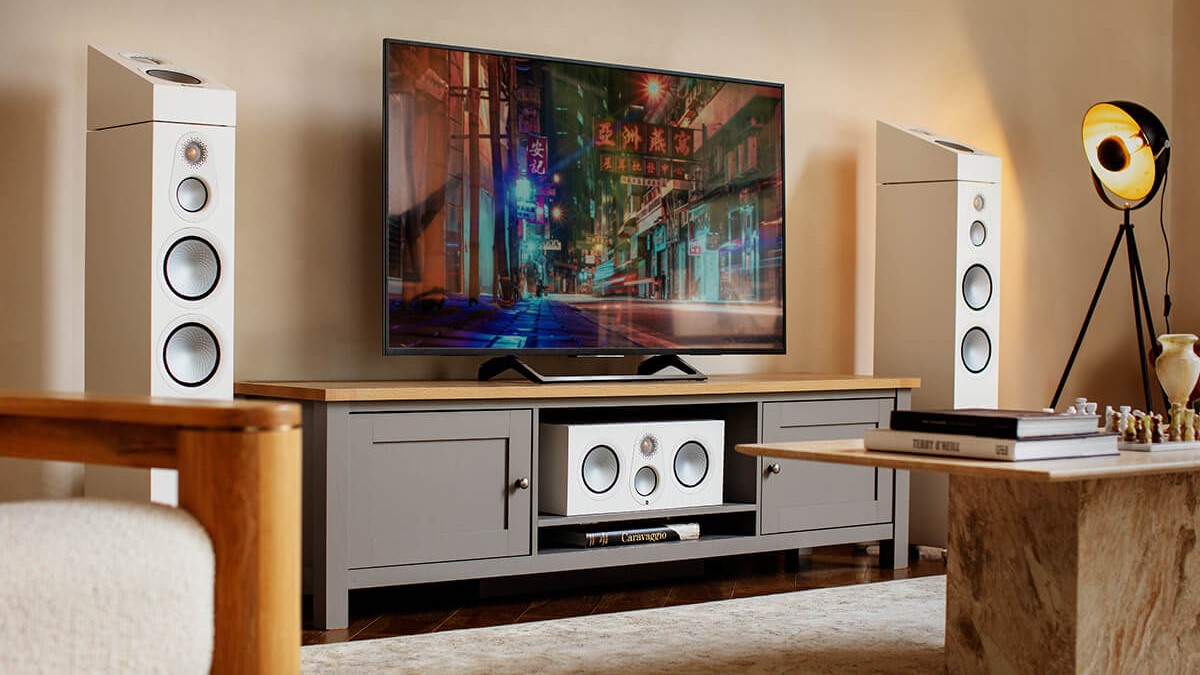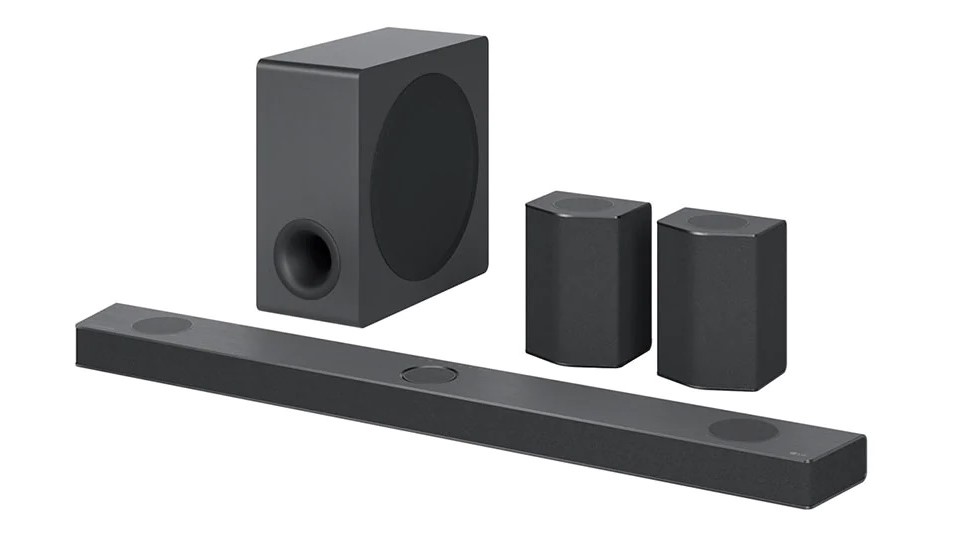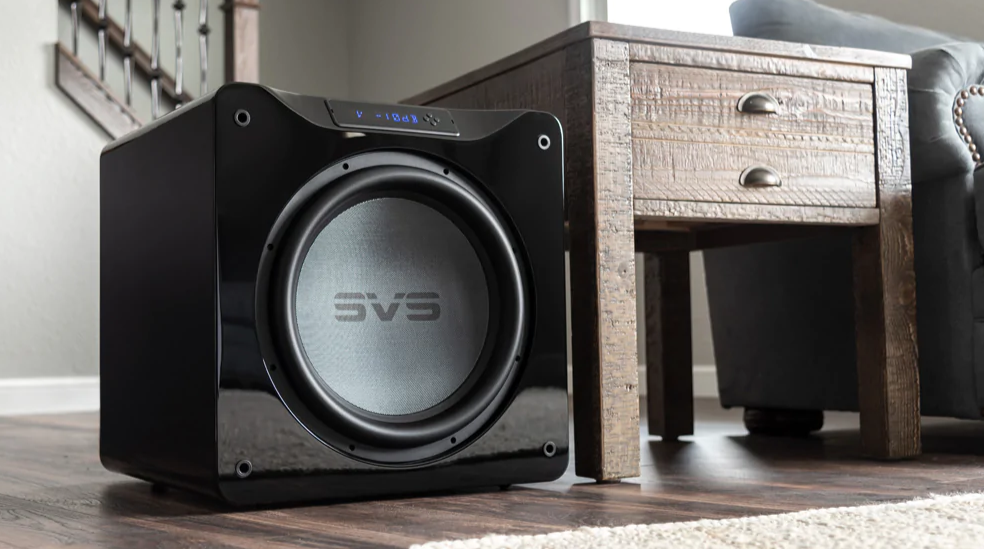5 things speakers can do better than Dolby Atmos soundbars
Good reasons to upgrade from a soundbar

Let’s hear it for soundbars: they offer a cheap and easy way to upgrade the built in audio of the best 4K TVs, and the better ones add features like Dolby Atmos processing, a separate wireless subwoofer and surround sound speakers, plus up-firing speakers to convey overhead effects in Atmos soundtracks – something they do by bouncing the sound off the ceiling.
A few soundbar systems like LG’s S95QR, big brother to the S80QY that TechRadar reviewed, pack all the features listed above, delivering a whopping 9.1.5 channels of audio. But the S95QR costs $1,800, and at that price level you really should be considering a separate speaker system instead.
What do you need to get up and running with a Dolby Atmos speaker system? First, you’ll need the speakers, which are typically sold in configurations listed as 5.1.2, 5.1.4, or 7.1.4. Those numbers refer to the number of speakers and their function, with the 5 (or 7) representing the main left, right, center, and surround speakers; the 1 representing the subwoofer; and the 2 (or 4) representing the Atmos overhead effects speakers.
Next, you’ll need an AV receiver, an all-in-one component with Dolby Atmos and other types of surround sound processing, multiple amplification channels to power all the speakers, and HDMI input ports to connect source devices like an Apple TV 4K and 4K Blu-ray player, plus HDMI output ports to link to a 4K TV or projector.
Last, you’ll need speaker cables to connect the A/V receiver with the various speakers in the system, an inelegant and sometimes complicated process – one that causes many people to instead opt for a soundbar in the first place.
If you do choose to go the separate speakers and AV receiver route, which in some cases can be done for the same price or even less than high-end soundbar systems like the LG S95QR mentioned above or Samsung’s HW-Q990B, you’ll find that it provides multiple advantages. Here are just 5 examples of what speakers do better than soundbars, listed in no particular order:

Deliver clear dialogue
Unlike in a soundbar, where the system’s many speaker drivers are packed together within the same cabinet, the center channel in a regular surround sound system gets its own dedicated speaker. This is typically placed on a stand just beneath the TV, where it can be “locked” to the screen so that dialogue appears to be coming from the actors’ mouths.
Get daily insight, inspiration and deals in your inbox
Sign up for breaking news, reviews, opinion, top tech deals, and more.
Because the center channel speaker is physically separated from other ones in the system, it can convey voices in a clearer manner than what you’ll experience with soundbars. And since dedicated center channel speakers have a more extended frequency range with better bass than the ones used to carry dialogue in a soundbar, voices will sound more natural.
Create proper surround sound
Although pricier soundbar systems do come with dedicated surround sound speakers, most people choose to make do with just the front channels delivered by more basic soundbar options, or the “virtual” surround sound they deliver. And that’s a shame because surround effects are one element in movie soundtracks that really bring action to life by placing you in the center of it.
Like separate center channel speakers, surround speakers typically have an extended frequency range that helps make surround effects sound more realistic and have greater impact. Most systems use just a pair for the left and right rear channels, but you can add a second pair as side surround speakers to better convey the full range of surround effects in both 7.1-channel and Dolby Atmos soundtracks.
Optimize Atmos height effects
As mentioned above, the better soundbars provide up-firing speakers to convey overhead effects in Atmos soundtracks. Even so, the spread of the overhead sound is more limited than it would be with dedicated Atmos height speakers due to all the speakers being packed together in a single, compact enclosure.
Dedicated Atmos height speaker modules typically sit on top of your left and right front and surround speakers. (Some speakers come with these already built-in to their top surface.) Another variation is in-ceiling Atmos height speakers, although those usually require professional installation. Whichever version you use, separate speakers can spread overhead effects over a wider listening area than soundbars, which will make the immersive effect of Dolby Atmos soundtracks even more dramatic and powerful.

Reproduce low frequency effects (LFE)
Soundbar systems that come with a separate wireless subwoofer are preferable to all-in-one soundbars because they deliver deeper and louder bass effects in movie soundtracks. But the subwoofers that come with most soundbars typically have limited bass extension compared to the subwoofers used for separate speaker systems.
Because soundbars are compact designs that use small – in some cases, tiny – speakers, the system’s subwoofer is designed to carry all of the bass and even some of the vocal-range frequencies, and for that reason need to be situated close up to the soundbar for best performance.
The standalone subwoofers used in regular speaker systems are purpose-built designs that can deliver much deeper bass effects in movie soundtracks than soundbars, and do it at a much louder level. And because AV receivers provide more flexible setup features to route the bass to individual speakers in a regular speaker system, you can position the subwoofer anywhere in the room that you’d like.
Render a real stereo image
Music presentation can suffer in soundbars as compared with more traditional separate speaker systems. That’s because, same as with dialogue and overhead effects in Dolby Atmos soundtracks, the compact, all-in-one design of a soundbar, which bunches individual speakers together, compromises its ability to deliver separation of the left and right channels – a necessary condition for creating a proper stereo image.
This won’t be a problem for most people since they bought their soundbar mainly to enhance TV sound. But if you’re equally interested in listening to music as in watching TV shows and movies, you will absolutely get better performance by upgrading to a separate AV receiver and speakers over a soundbar system.

Al Griffin has been writing about and reviewing A/V tech since the days LaserDiscs roamed the earth, and was previously the editor of Sound & Vision magazine.
When not reviewing the latest and greatest gear or watching movies at home, he can usually be found out and about on a bike.